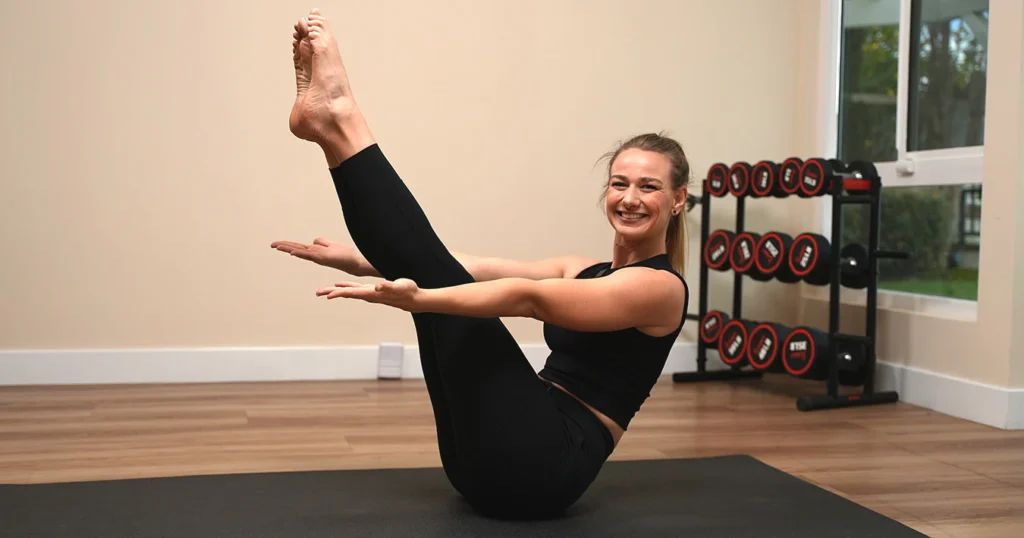Should I Let Them Heal Doing Exercise – Recovery Exercise Tips!
Exercise can help healing if done correctly. Start slow, focus on low-impact exercises, and consult a healthcare provider.
In this article, we’ll explore how exercise affects the healing process, when you should consider incorporating exercise into your recovery routine, and what to avoid to prevent further harm. Let’s dive in!
Should I Let Them Heal Doing Exercise? Understanding the Role of Exercise in Healing:

When you’re recovering from an injury or dealing with chronic pain, one question often arises: Should I let them heal doing exercise? It’s a question that combines both concern for your well-being and curiosity about how movement impacts recovery. The short answer is: it depends. While exercise can aid in healing, the type, intensity, and timing of exercise are crucial factors in determining whether it’s beneficial or counterproductive.
The Role of Exercise in Healing:
Exercise, when done correctly, can play a vital role in healing injuries and improving overall health. The key lies in understanding the healing process and how exercise interacts with it. Here’s how:
- Increases Blood Flow: Exercise promotes circulation, which helps deliver nutrients and oxygen to tissues that are recovering. This is crucial for speeding up the healing of muscles, ligaments, and bones.
- Reduces Inflammation: Low-impact exercise, such as walking or swimming, can help reduce inflammation and swelling, which are common during the recovery process.
- Strengthens Muscles and Joints: After an injury, muscles and joints may weaken due to inactivity. Gradual exercise can rebuild strength, prevent muscle atrophy, and improve the mobility of the affected area.
- Stimulates Healing: For some injuries, particularly soft tissue injuries like strains and sprains, controlled movement can stimulate healing by encouraging the repair of damaged tissues and preventing scar tissue from forming improperly.
When Should I Start Exercising After an Injury?
Knowing when to begin exercising after an injury is essential. Too early, and you risk aggravating the injury. Too late, and your muscles and joints may become stiff and weak. Here are some general guidelines:
Also Read: How Long Does A Hamstring Strain Take To Heal – Hamstring Injury Healing Time!
Acute Phase: (First 48-72 hours)
- Rest and Recovery: Initially, it’s important to give your body time to rest. During the acute phase of an injury, follow the R.I.C.E. method: Rest, Ice, Compression, and Elevation. Avoid exercise during this time unless otherwise advised by a healthcare professional.
Subacute Phase: (After 3-7 days)

- Gentle Movement: Once the initial pain and swelling have subsided, light movement or gentle stretching may be appropriate. This can help keep the joint or muscle limber and prevent stiffness. Activities like walking, cycling, or swimming are generally safe.
Rehabilitation Phase: (Weeks 2-6)
- Strengthening Exercises: As your body begins to heal, you can incorporate more specific exercises aimed at strengthening the injured area. This may include resistance training, core exercises, or range-of-motion work, but only under the guidance of a healthcare professional or physical therapist.
Full Recovery: (After 6-12 weeks)
- Gradual Return to Activity: Once the injury has healed sufficiently, you can gradually return to your normal activities. This may involve a gradual increase in intensity and duration of exercise. Always listen to your body to avoid overexertion.
Also Read: How Long Does A Friction Burn Take To Heal – Friction Burn Recovery Tips!
The Right Kind of Exercise for Healing:
Not all exercises are created equal when it comes to healing. Choosing the right type of movement can make a big difference in your recovery time and overall well-being.
Low-Impact Exercises:

Low-impact exercises, such as walking, swimming, or cycling, are great choices during recovery. They allow you to maintain or improve fitness without putting excessive strain on your injured area. Swimming, in particular, can be an excellent option because the water supports your body weight, reducing the risk of further injury.
Stretching and Mobility Exercises:
Gentle stretching can help maintain flexibility, which is important for recovery. Focus on stretches that improve range of motion around the injured joint or muscle. However, avoid overstretching, as this can lead to further strain.
Strengthening Exercises:
Once your injury begins to heal, strengthening exercises are crucial. However, it’s important to start slowly. Focus on exercises that target the injured area and surrounding muscles. Resistance bands, bodyweight exercises, or light weights are good starting points. Make sure to progress gradually to avoid re-injury.
Also Read: How Long Will A Knee Sprain Take To Heal – A Comprehensive Guide!
Core and Stability Work:
Maintaining core strength and improving your body’s stability can help reduce the strain on injured areas and prevent future injuries. Incorporating exercises like planks, bridges, or balance exercises into your routine can be beneficial for overall recovery.
When to Avoid Exercise During Recovery?
While exercise can aid in the healing process, there are times when it’s better to avoid certain movements or activities. These include:
- Sharp or Persistent Pain: If you experience sharp or persistent pain while exercising, it’s a sign that you may be pushing too hard. Stop the activity immediately and consult your healthcare provider.
- Swelling or Inflammation: If the injured area is still swollen or inflamed, it’s best to avoid exercises that may exacerbate these symptoms.
- Unhealed Injury: If your injury hasn’t healed to the point where you can move the joint or muscle without pain or discomfort, it’s best to avoid exercise until you’ve received clearance from a healthcare professional.
- High-Impact Activities: Avoid high-impact exercises, such as running or jumping, during the early phases of recovery. These activities can put excessive strain on healing tissues and may prolong the healing process.
Tips for Exercising Safely During Recovery:
- Consult a Professional: Before starting any exercise routine after an injury, consult with a physical therapist or healthcare professional to ensure that you’re choosing the right exercises for your condition.
- Listen to Your Body: Pay close attention to how your body responds to exercise. If something doesn’t feel right, stop and reassess.
- Start Slowly: Gradually ease into exercise to avoid overloading your muscles and joints. Begin with low-impact activities and slowly progress to more demanding exercises as you heal.
- Prioritize Consistency Over Intensity: Recovery isn’t a race. Focus on consistent, gentle movement rather than pushing for rapid improvement.
FAQ’s
1. When can I start exercising after an injury?
Begin exercising once pain and swelling subside, usually 3-7 days after the injury. Always consult a professional first.
2. Is exercise good for reducing swelling?
Yes, low-impact exercises like walking and swimming can help reduce swelling and improve circulation.
3. What exercises are safe during recovery?
Low-impact exercises such as walking, cycling, swimming, and gentle stretching are ideal during recovery.
4. How do I know if I’m overdoing it?
Stop exercising if you experience sharp or persistent pain, swelling, or discomfort in the injured area.
5. When should I avoid exercise?
Avoid exercise if there is persistent pain, swelling, or if the injury has not fully healed. High-impact activities should be avoided early in recovery.
Conclusion
In short, exercise can significantly aid in recovery if done at the right time and intensity. Start slow, choose low-impact movements, and always listen to your body. Consult a healthcare professional to ensure you’re taking the best approach for your specific injury. With patience and consistency, exercise can enhance healing and restore strength.






